Amazfit T-Rex Pro
Two-minute review
You’ve started running and going on hikes, and you plan to go skiing and swimming. Now you want to start mapping your adventures, collecting data and measuring your heart rate, and for high-altitude hikes, even your SpO2 (oxygen saturation) levels. It may have a rather uninspiring, industrial design, but Amazfit’s T-Rex Pro can do all that – and more.
It’s got 100 sports modes – from running and hiking to snowboarding, rock climbing and cross-country skiing – and it can auto-detect most of them. It’s got GPS so can map your run (though it won’t help you navigate). It’s also waterproof down to 100m. Its battery life can stretch to 18 days – and that’s despite it having a bright, colourful 1.3-inch AMOLED display.
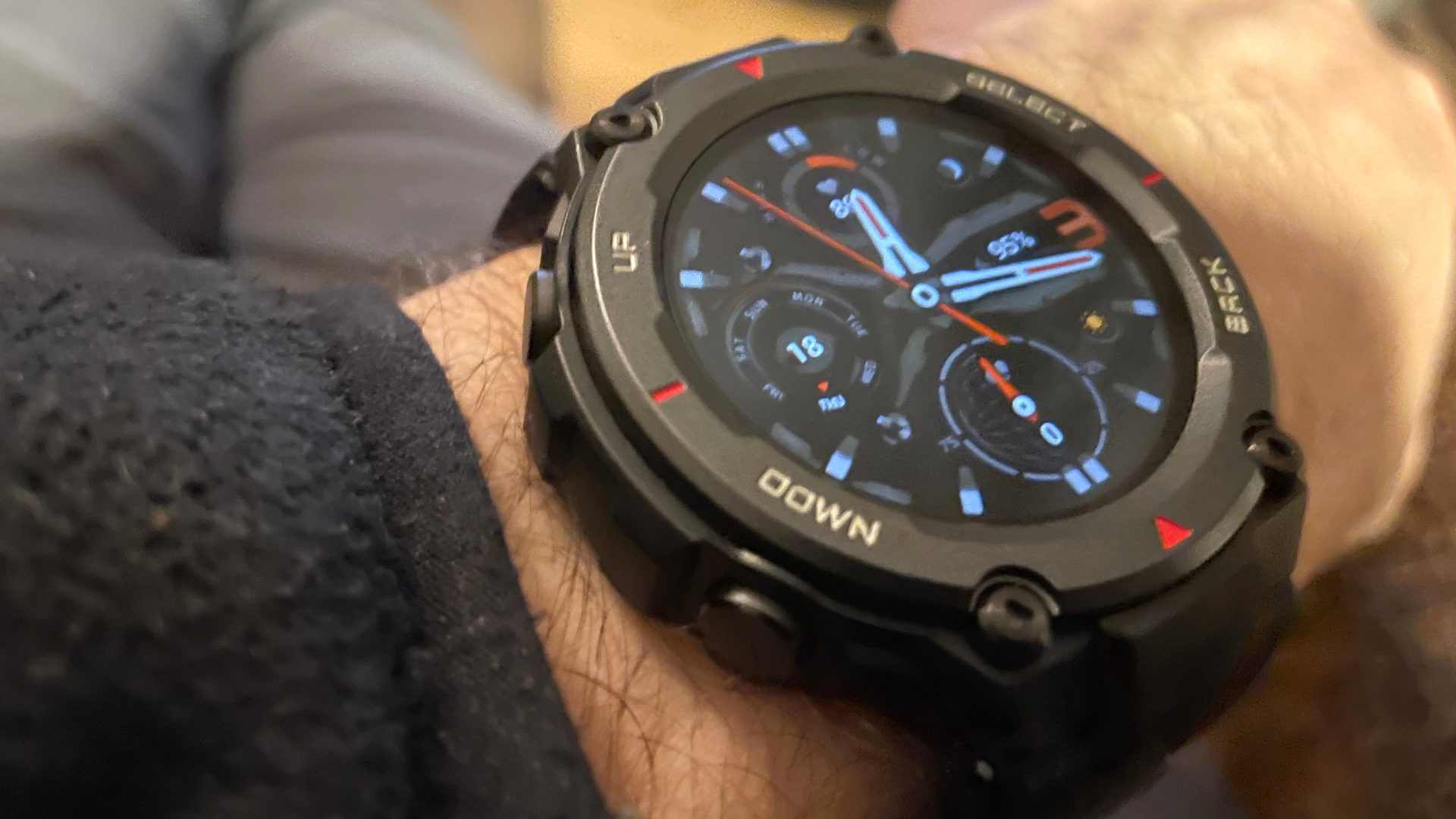
For its low price that’s quite an achievement, but is it a rugged fitness tracker or a smartwatch? It’s actually both, also able to funnel through notifications from your smartphone and control music via Bluetooth 5.0. You can even switch-up watch faces. The T-Rex Pro will also give you a finely textured read-out of your night’s sleep.
So why are we not totally convinced by the T-Rex Pro? Created by Chinese brand Zepp Health – formerly Huami – the T-Rex Pro collects a lot of data, but then what? Sure, it’s available in the Zepp app, but aside from being able to post your latest workout to social media, there’s not much you can do with that data. So if you’re currently using smartphone apps like Strava or MyFitnessPal to track your activity and/or your diet, you’ll have to live with two silos of data that don’t integrate. And that just seems like a barrier to wanting extra activity data in the first place.
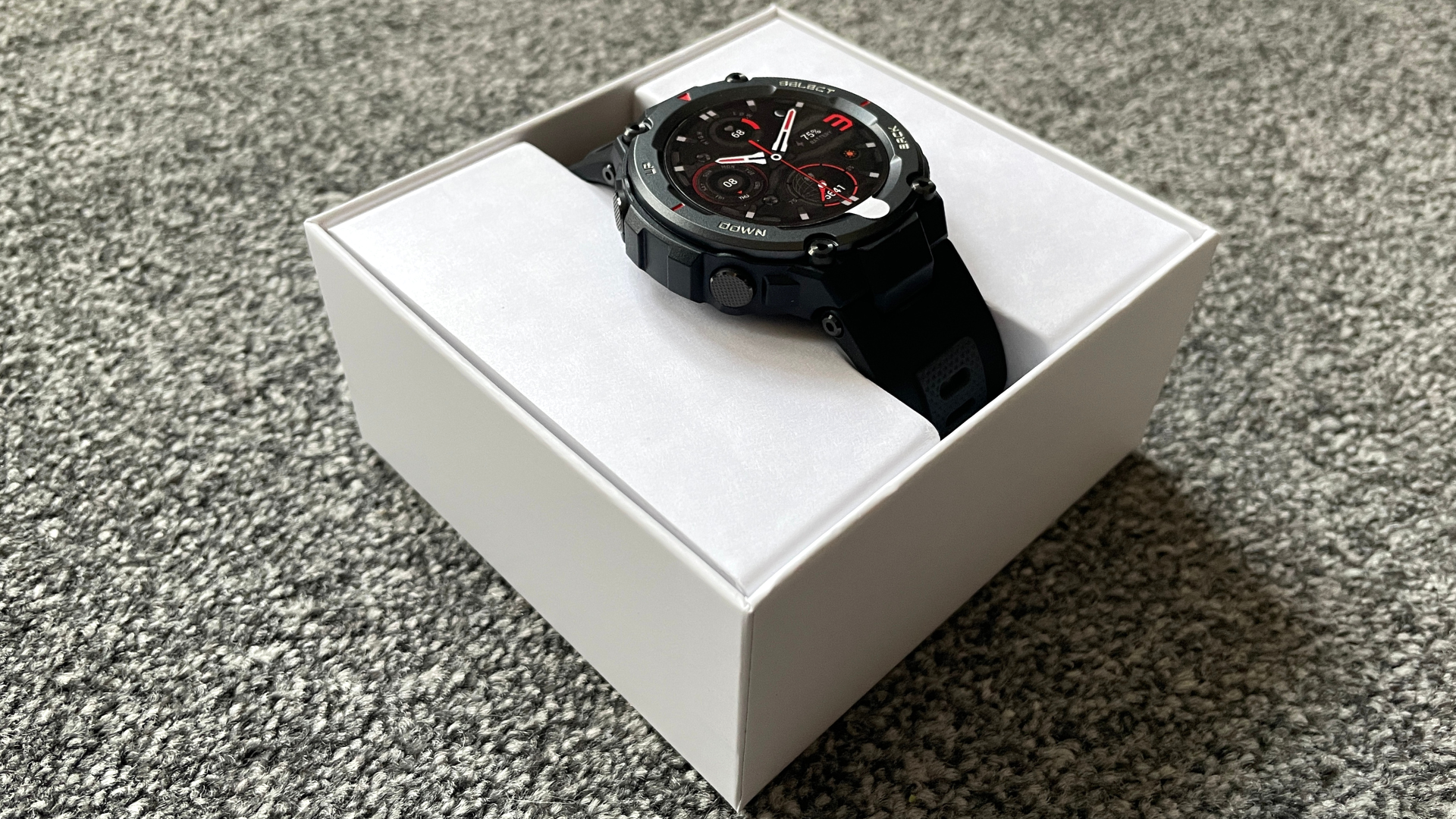
You'll be hard-pressed to find a better value rugged sports watch that covers the basics for running, cycling, hiking and more. But despite its many good points we’re not totally convinced the T-Rex Pro is generous enough with its data to be considered best-in-class.
Amazfit T-Rex Pro price and release date
- Out now
- Costs $179.99 (around £139, AU$249)
The T-Rex Pro was released in March 2021 for $179.99 / £139 / AU$249. In the US it’s available directly from Amazfit while in the UK it can be purchased either from Argos or Amazon. It’s initially available in three colours: Meteorite Black, Desert Green and Steel Blue.
Amazfit T-Rex Pro design
- Chunky design
- 1.3-inch AMOLED display
- Silicone rubber wrist strap
You get a lot of features for your money with the T-Rex Pro, but a ‘wow factor’ isn’t one of them. The T-Rex Pro looks almost exactly like the original Amazfit T-Rex. This new version also has four screws in the bezel for a practical, industrial and slightly plasticky look.
There are also four metal buttons (mode, back, up and down) on the edge of the casing that are big enough to easily press while running or when wearing gloves. Too easily, in fact, making accidental presses inevitable.
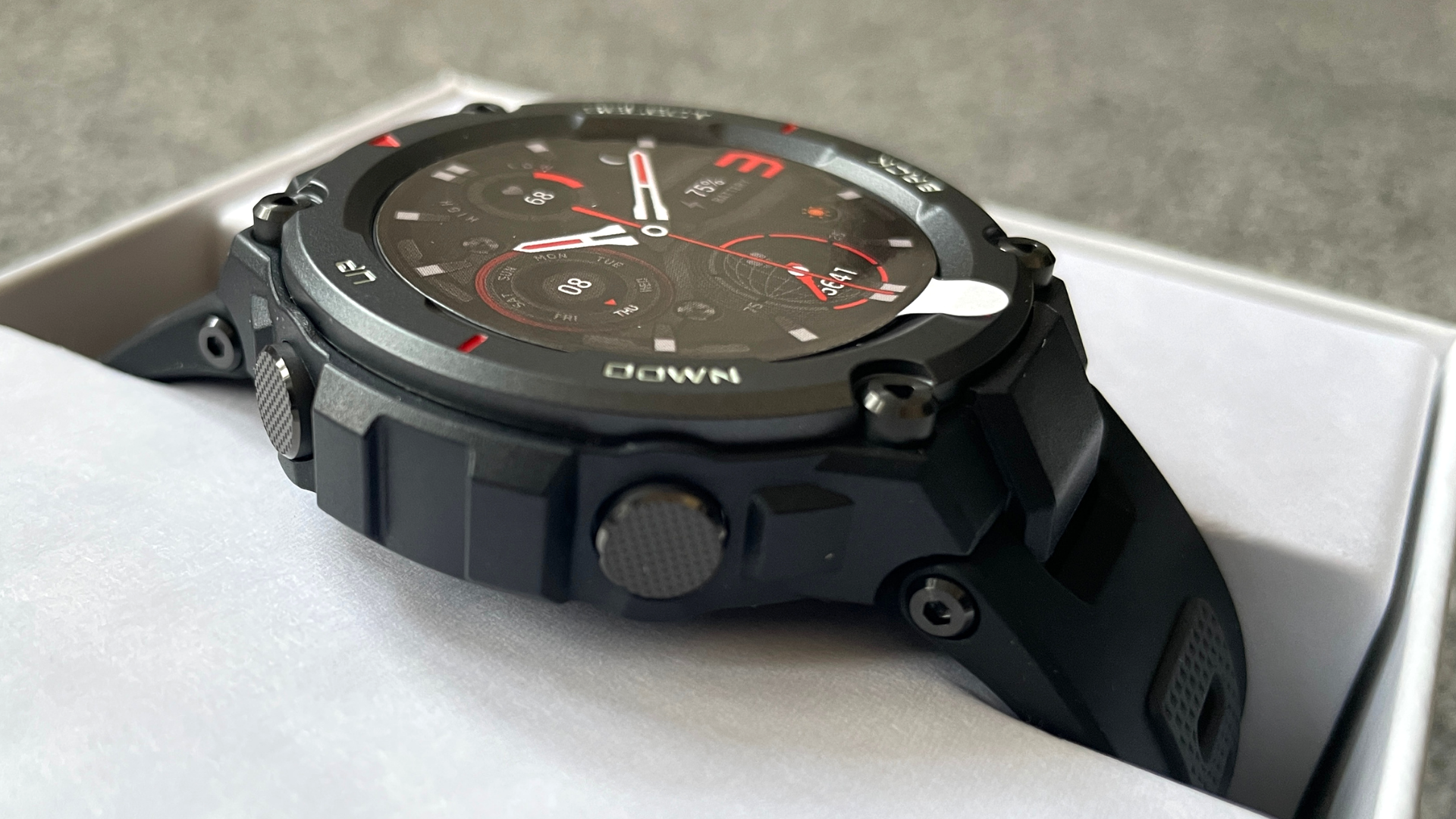
A 47.7mm radius watch that’s 13.5mm thick, the T-Rex Pro is a chunky polycarbonate product that has a relatively masculine look, but its paltry 59.4g means it never feels heavy when being worn. Zepp says that the T-Rex Pro is shock-resistant, can withstand -40°C to 70°C, copes with salt spray and meets the MIL-STD-810G standard, though by far its most important rugged feature is that it’s waterproof down to 100m. That’s double what the original version was capable of.
The T-Rex Pro is built around a 1.3-inch AMOLED touchscreen display that has a 360 x 360 pixel resolution (again, just like its forbear). It’s easily visible in bright sunlight, though only if you set it to its top brightness level. Of course, that affects its battery life, which Zepp rates at 18 days. In practice, its 390mAh battery goes for about a week, which is still impressive.
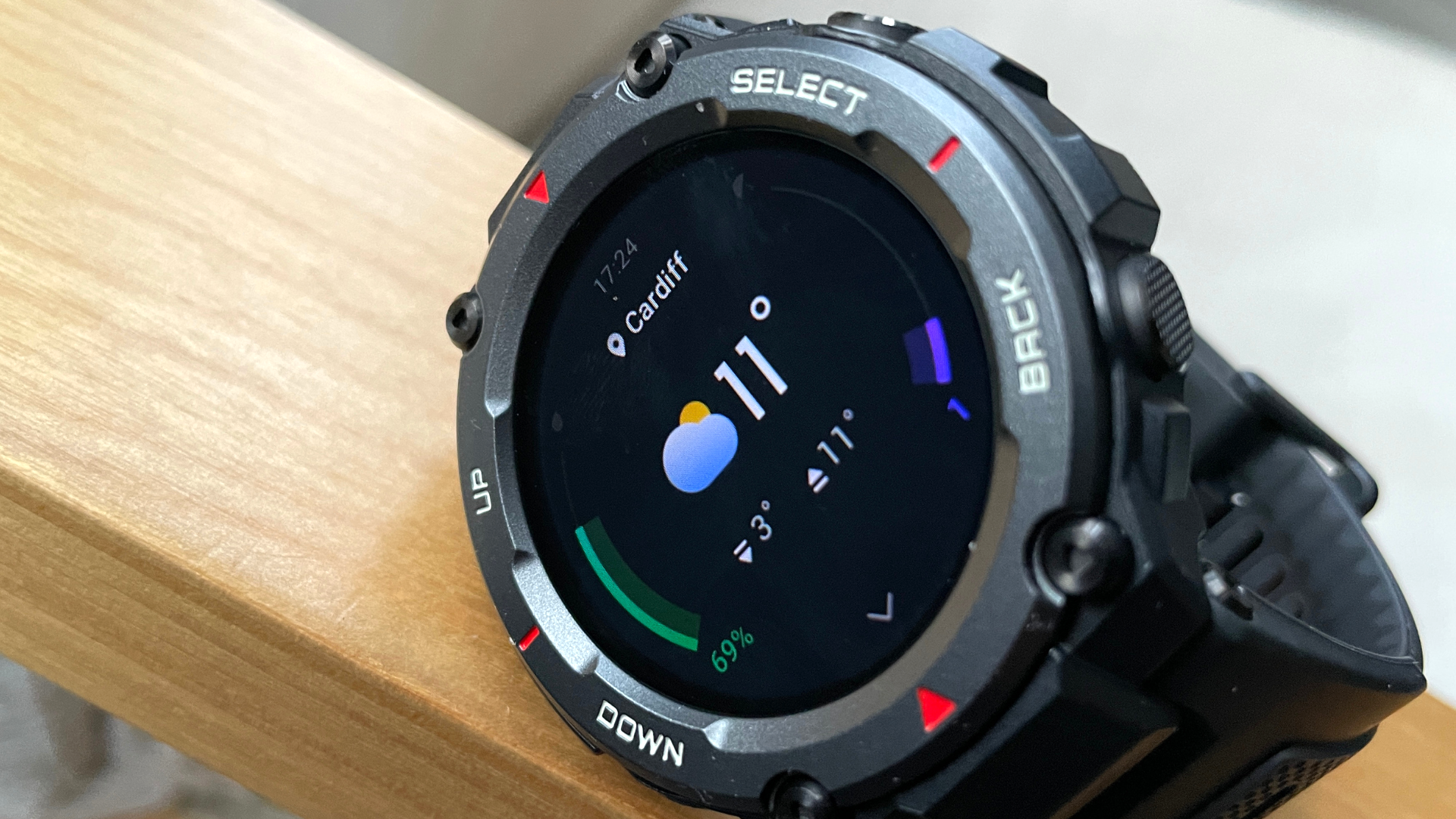
It ships with a silicone rubber 22mm-wide wrist strap that’s comfortable and stays in place when running. The only other accessory in the box is a proprietary charger that magnetically attaches to the case back. That’s where you’ll find the flashing LEDs of Zepp’s new-for-2021 Bio-Tracking 2 PPG optical sensor, which measures heart rate and SpO2 (oxygen saturation). Inside is also an accelerometer, a gyroscope, altimeter, geomagnetic sensor and an ambient light sensor.
In short, it’s a data-gathering monster.
Amazfit T-Rex Pro setup
- Arrives fully charged
- Links to Zepp app easily
- Customizable watch faces and screensavers
Although the T-Rex Pro is ostensibly a fitness-orientated watch it also has a few smartwatch-like features. It’s nowhere near being the ‘ultimate personal assistant’, as claimed by the maker, but it can be set to haptically buzz for incoming text messages, calls and reminders. It can also exert basic control of the music on your phone.
Hook it up to a smartphone via Bluetooth – a simple task – and you’ll also get a weather forecast, sunrise and sunset times, and the current moon phase.
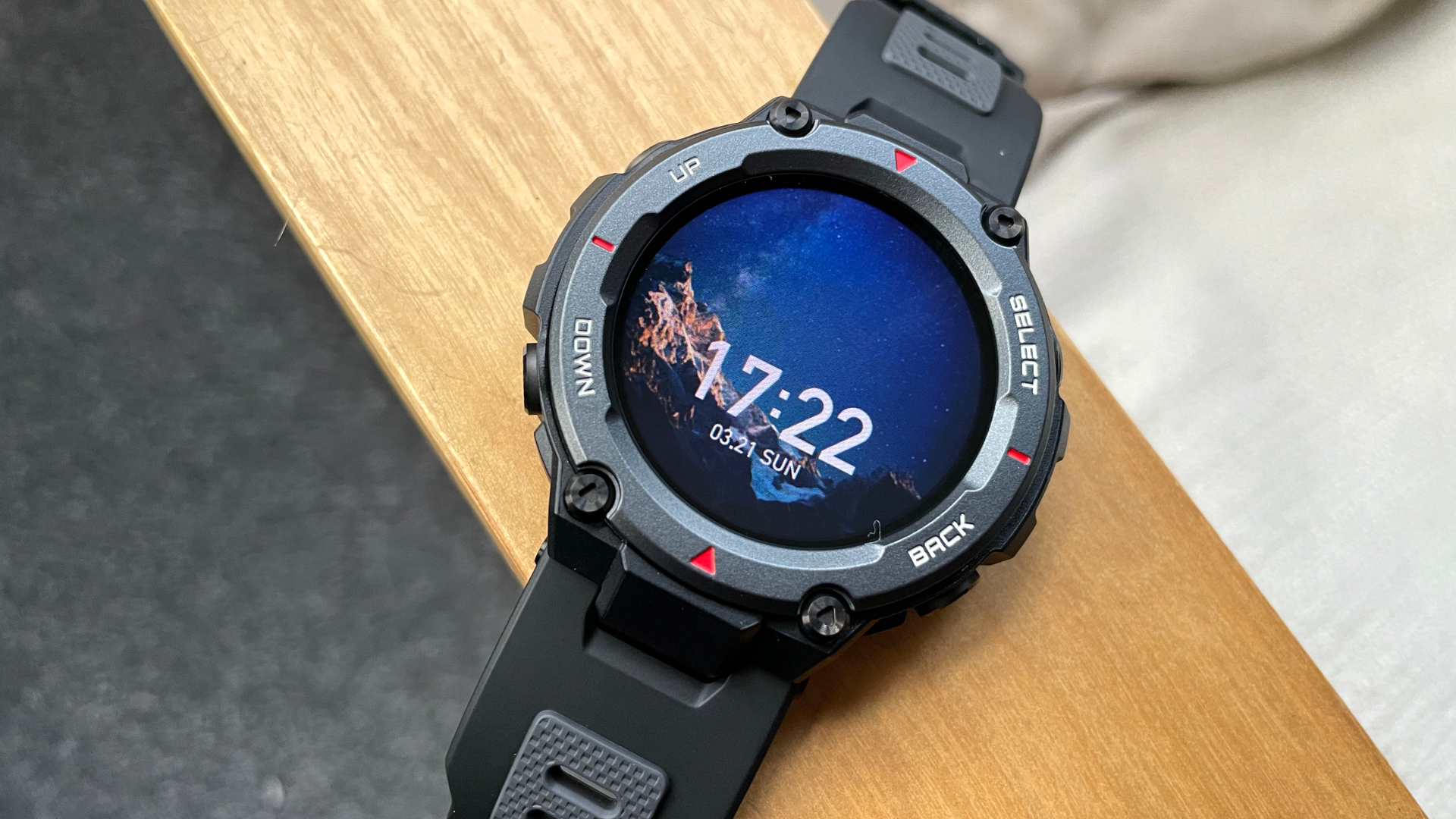
The tempered glass touchscreen is plenty responsive enough, which makes the T-Rex Pro a pleasure to use while on the move. Small swipes up and down swap between the watch face and the shortcut control panel, where you do everything from turn on the flashlight (which is not bright enough for any practical purpose!) and engage power-saving/do-not-disturb modes, to choosing a screensaver and setting the screen’s brightness. It’s also possible to set the display to be ‘always-on’ during set times.
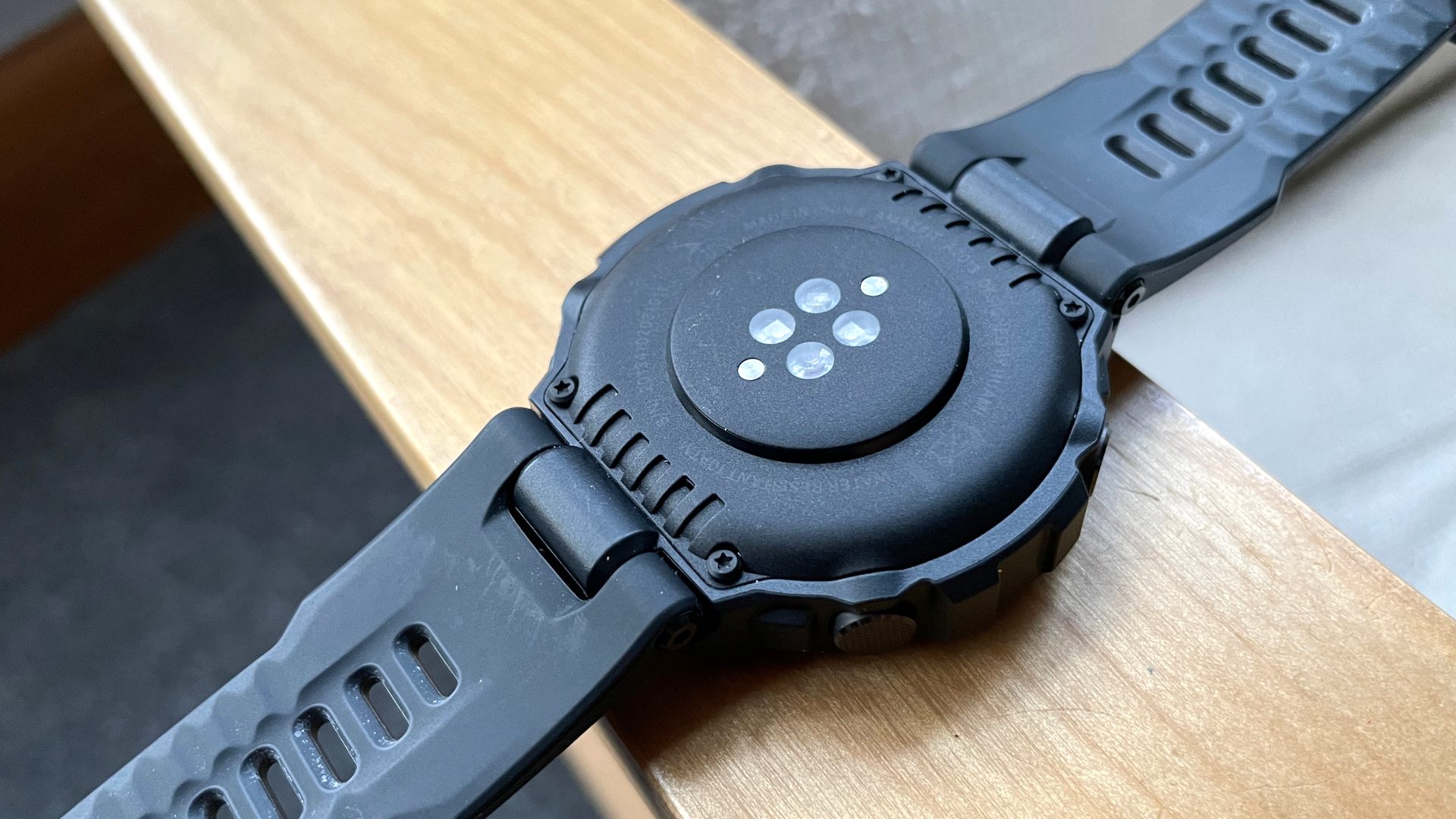
Although Zepp state that the T-Rex Pro has an ‘up to’ 18-day battery, it became clear that this applies only if you don’t really do any exercise. However, if you take an hour’s exercise each day and purposefully track it then you can expect the T-Rex Pro to run for about a week. Slightly less if you customize the T-Rex Pro to say, emit a haptic buzz every time you run a mile, or you set the display to be at maximum brightness and ‘always-on’ (though it does need to be on maximum brightness to be read easily during strong sunlight).
Amazfit T-Rex Pro fitness tracking
- Data is presented clearly
- Accurate heart rate monitoring
- Reliable GPS location tracking
Although a more capable version of the original T-Rex which we reviewed last year, like its forbear the T-Rex Pro is a good performing and great value smartwatch option that isn’t without its limitations.
The T-Rex Pro arguably includes more features than it should at its low price. For day-to-day use, its GPS and heart rate monitoring are probably the most important, and both worked well during our fortnight-long test. It picks up your heart rate every 10 minutes while at rest, and constantly during an activity. GPS tracking – which uses GPS, GLONASS, Galileo or BeiDou satellite positioning – was immaculate during our tests.
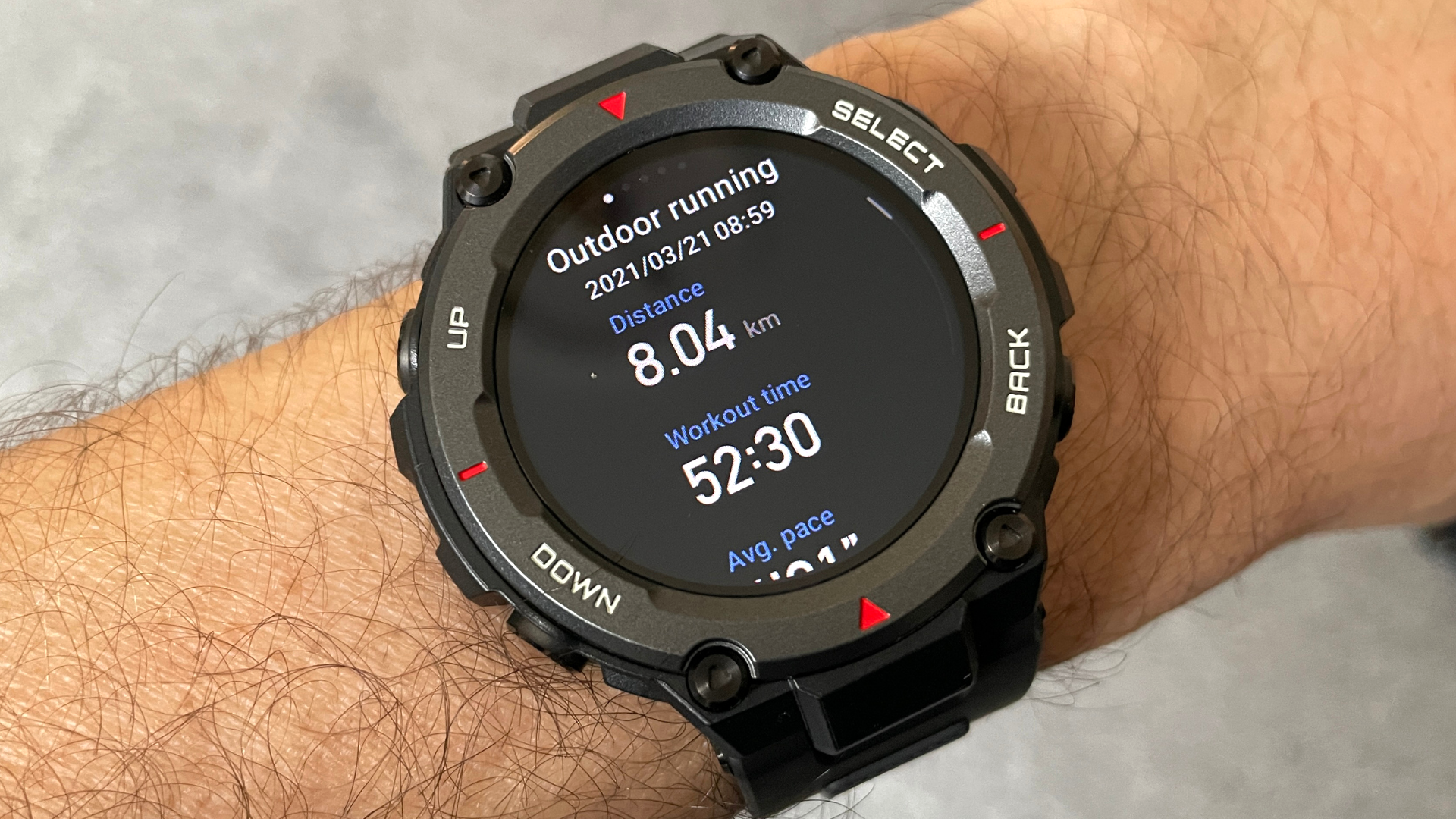
So during and after a run, you’ll get at-a-glance data on the time elapsed, calories burned, your average heart rate, and even finer detail like cadence, average stride, speed, elevation changes, and heart rate zones. As soon as you finish a run the T-Rex Pro will give you a recommended recovery time.
It also gives you a readout for VO2 max. Huh? That’s the maximum amount of oxygen in millilitres one can use in one minute per kilogram of body weight. So what? Ditto its data on Aerobic Training Effect, Anaerobic Training Effect and Training Load, which will also mean nothing to the most people.
We also consider SpO2 (oxygen saturation) readings more of a novelty and not really relevant unless you’re hiking at altitude and wary of altitude sickness. There’s too much data here and not enough interpretation and goal-setting/virtual coaching.
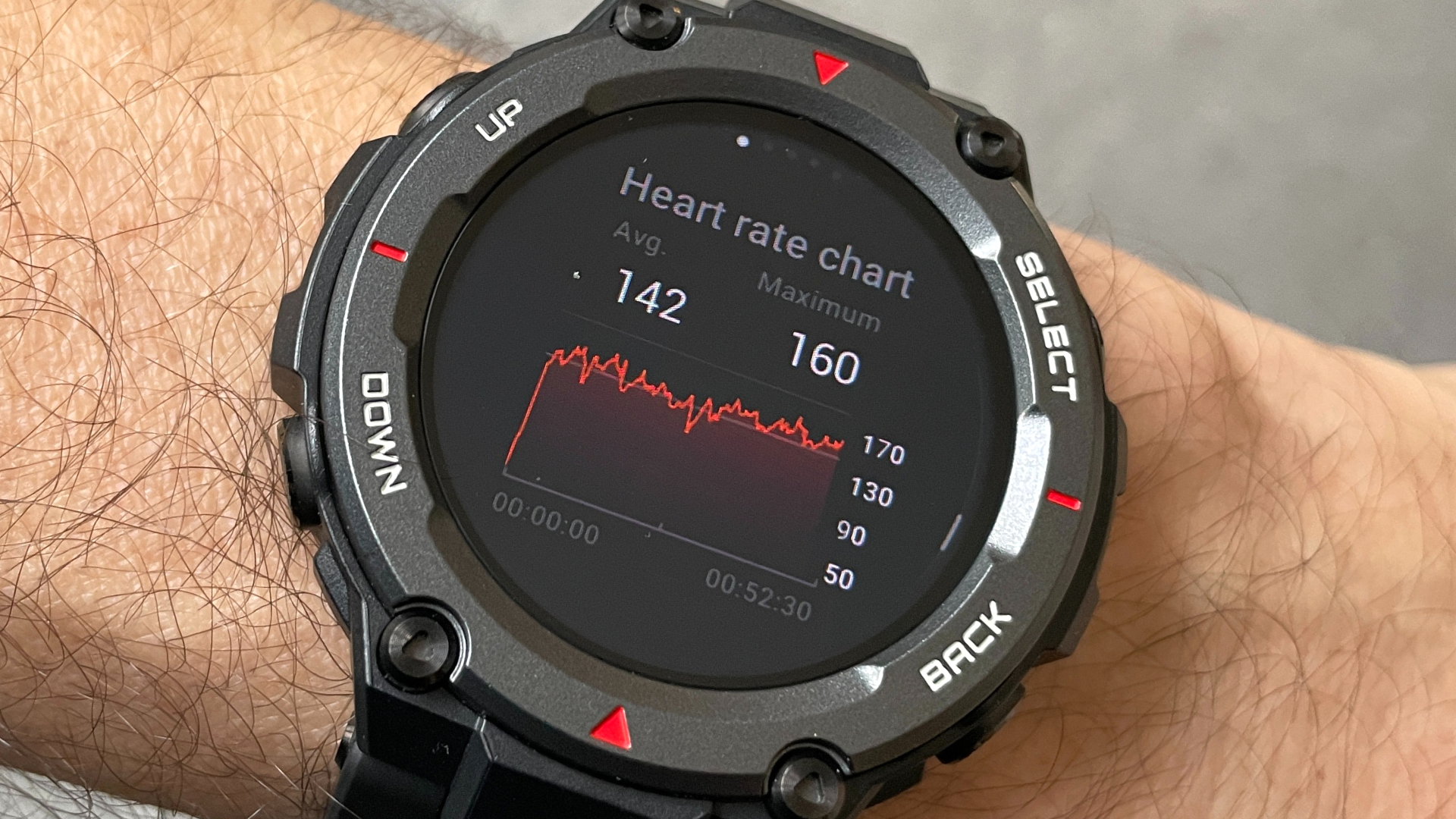
There are two ways to track your activity; let the T-Rex Pro auto-detect it, or physically hit the mode button and scroll down until you get to your intended activity – such as outdoor running, walking, treadmill, trail running, indoor walking (to mention just five of 24 activities in the list – though you can manually add more).
In our tests, when left to make its own mind up the T-Rex Pro maxed out at deciphering between outdoor running and walking, but proved less adept with the other activities. So it’s best to tell it exactly what you’re about to do.
One frustrating issue we had was how impractical the button layout is for hiking. The ‘select’ button on the watch’s right-hand side is too easy to press accidentally while wearing a sleeve over the T-Rex Pro, which pauses your workout. You’re unlikely to be wearing the T-Rex Pro under a sleeve while running, sports it’s not a huge problem day-to-day, but while hiking in a jacket it’s almost inevitable. The result is incomplete data – and there’s no easy fix.
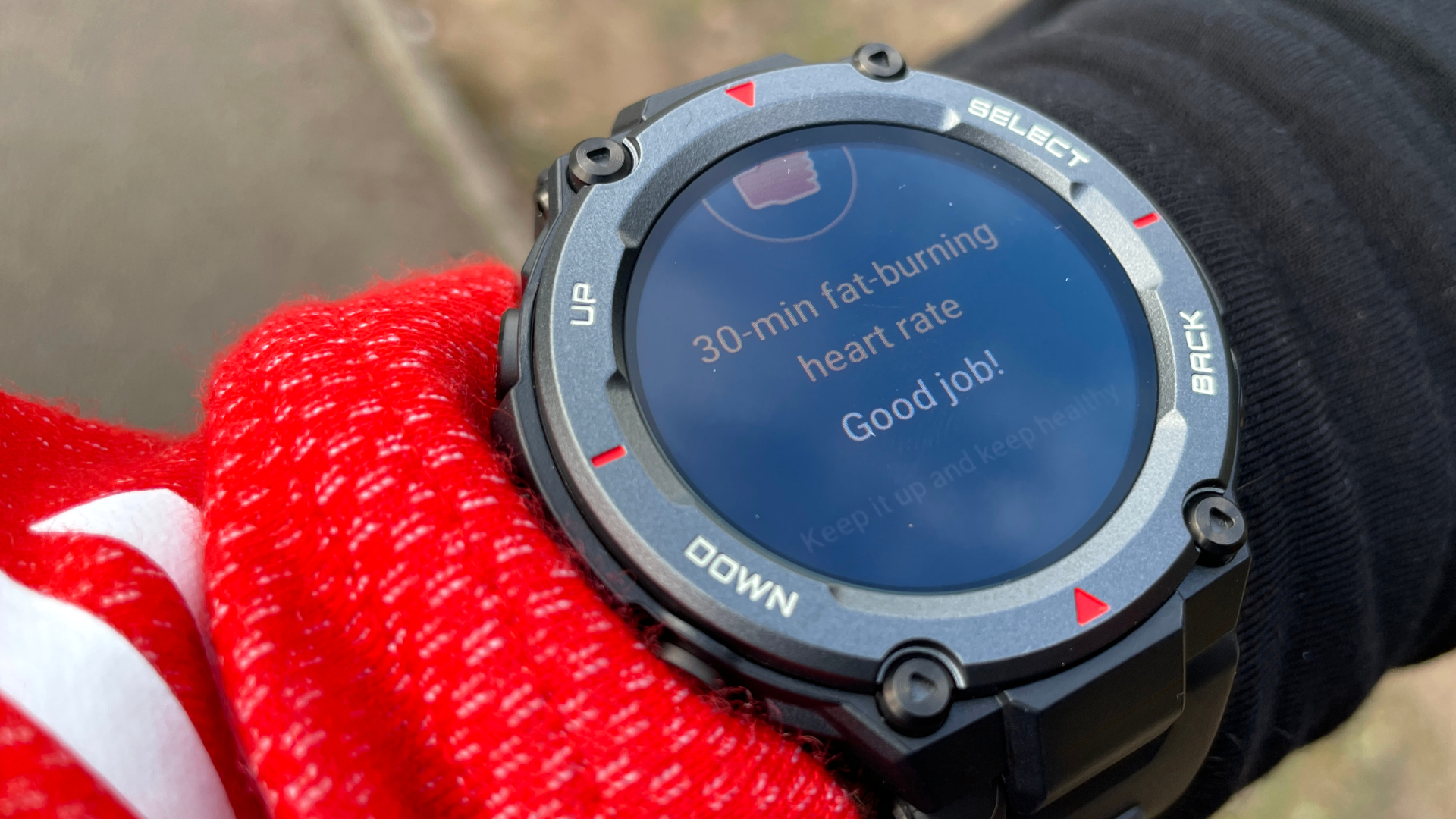
The T-Rex Pro is also not the perfect bedfellow. It does have a vibrating watch alarm, but instead of a gentle haptic buzz or two, you get heavy-duty bursts that don’t let up for 20 seconds. So everyone else in your bed is also going to get woken.
Amazfit T-Rex Pro companion app
- Presents biometric and map data clearly
- Collates data from other Amazfit devices
- Doesn’t integrate with third-party apps
The T-Rex Pro links to the brand’s free Zepp app, which it syncs to soon after you complete an activity and bring it close to your smartphone. It’s a cinch to see your current heart rate, step count, SpO2 levels and previous workout records, which are clearly and colourfully presented.
However, we were also disappointed by the ‘my goals’ section of the app, which is merely a target steps per day, target weight, target calories burned, and a target sleep. That’s all a bit basic given how esoteric is the data it seems obsessed with collecting.
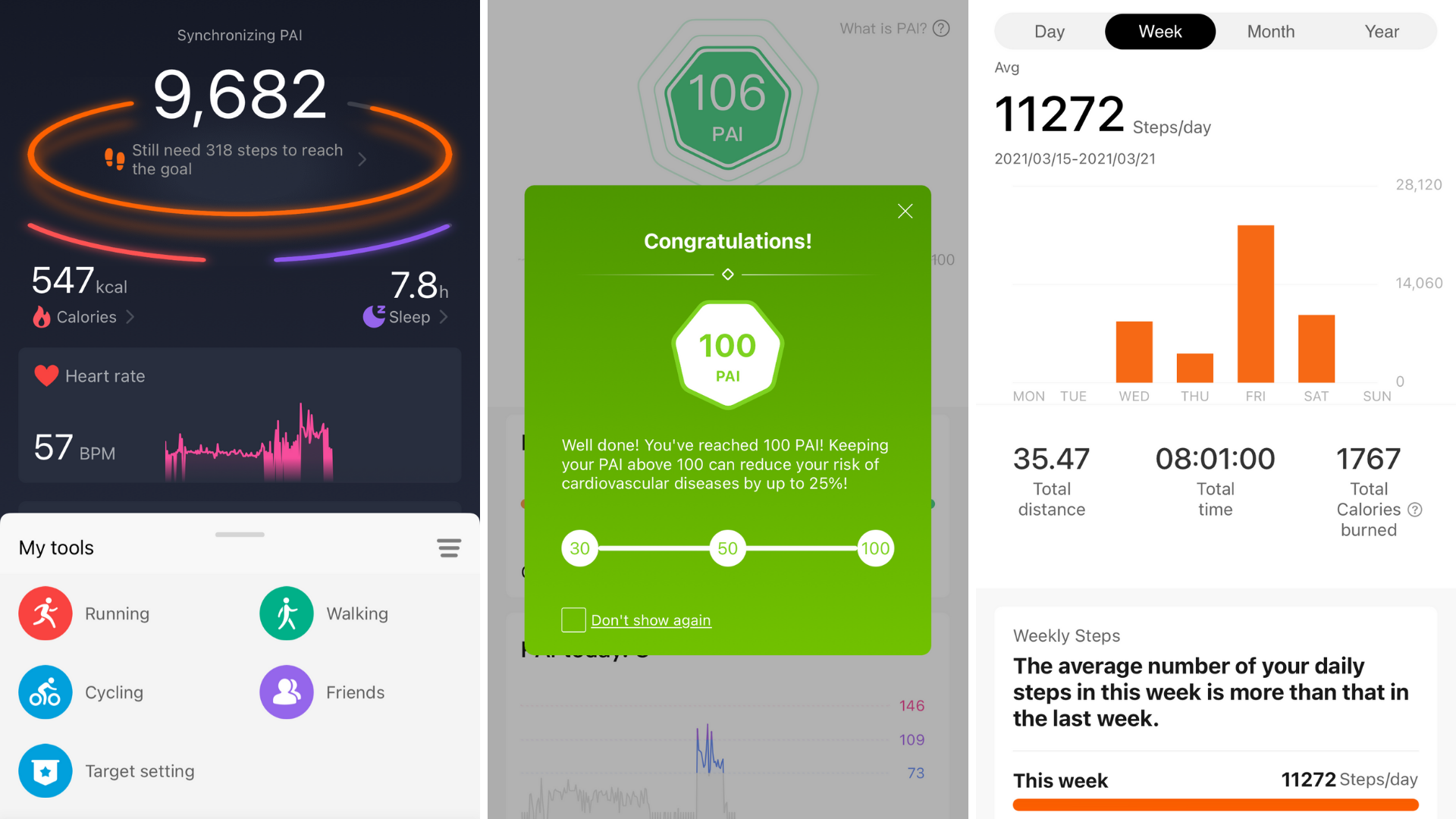
Like most such devices and apps there’s an attempt at simplicity and ‘gamification’ in which you’re awarded Personal Activity Intelligence (PAI) points. It’s a commendable effort to give users a single numerical value to represent that day’s physical efforts, but in practice a ‘congratulations you just reached 30 PAI!’ has no practical meaning. It’s yet another notification to ignore.
While it collects a lot of data, the T-Rex Pro doesn’t do much with it. It’s not going to coach you to make you run faster. Its ‘workout assistant’ section does include a ‘virtual rabbit’ mode so you can race against your time at a previous workout, but it doesn’t alert you if you’re behind the pace.
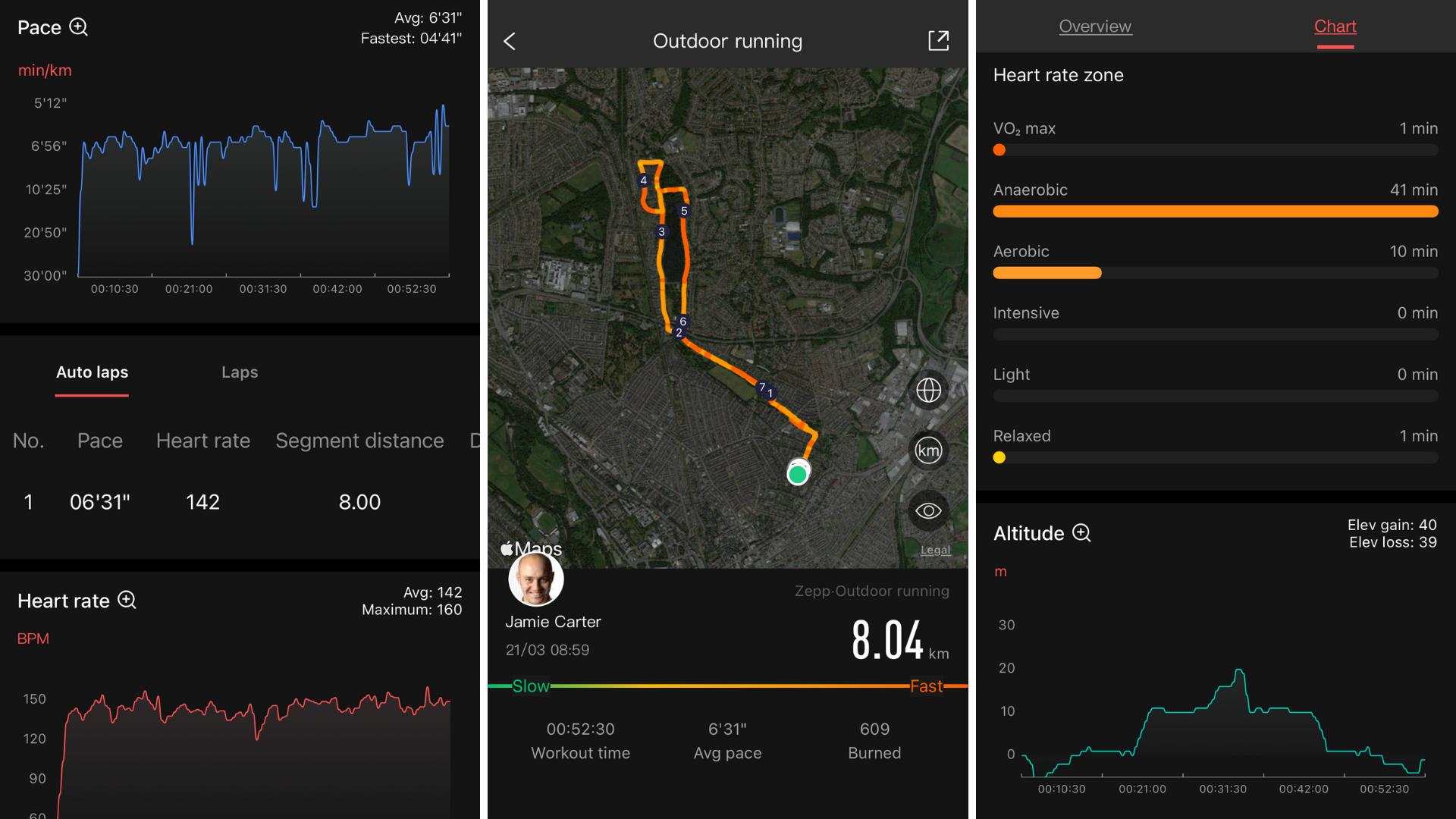
More seriously, the T-Rex Pro doesn’t link up to third-party apps, so if you’re already in a groove with a fitness tracking app like Strava, MyFitnessPal or RunKeeper and merely wanted to use it to improve on the data your collecting then you’re out of luck.
First reviewed March 2021
Buy it if
You want a good value heart-rate tracker
The T-Rex Pro offers heart-rate tracking and can be set to make a haptic buzz every time you get in the zone.
You hate having to recharge gadgets
Though the battery doesn’t last 18 days as claimed, you don’t have to worry about whether this watch is ready when you are. It lasts for several days, though come recharge day you do have to use a proprietary charging cable.
Don't buy it if
You want GPS navigation
It may track and map your walk or run, but the Amazfit T-Rex Pro isn't going to help you out with directions.
You want third party app integration
Although its Zepp companion app is reasonably good, the T-Rex Pro doesn’t integrate with any third-party apps like Strava or My Fitness Pal.
- Check out our complete guide to the best running watches
0 comments:
Post a Comment